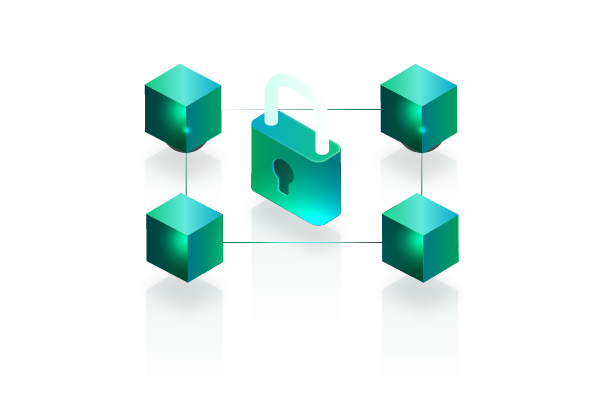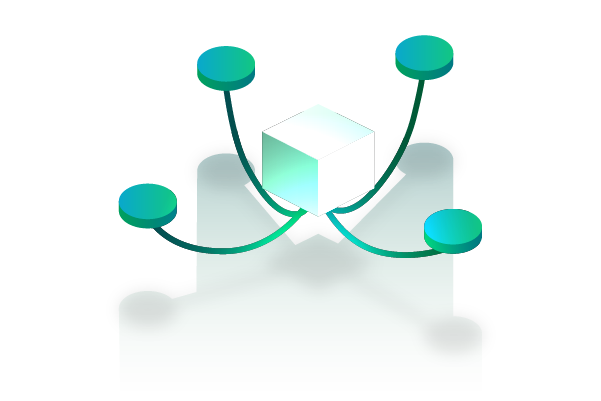In the evolving landscape of blockchain technology, two terms frequently emerge at the heart of discussions: Decentralized Applications (DApps) and Smart Contracts. While both play crucial roles in the ecosystem, understanding their differences and how they interconnect is essential for anyone looking to dive deeper into the blockchain world. This article aims to demystify these concepts, breaking down their functions, distinctions, and the unique ways they complement each other.
DApps are the innovative applications that run on a blockchain network, offering users a decentralized experience, free from central authority control. They represent the user-facing side of blockchain technology, where individuals can interact directly with the decentralized services. On the other hand, smart contracts are the backbone of these applications, the self-executing contracts with the terms of the agreement directly written into lines of code. These contracts automatically enforce and execute the terms of agreements without needing intermediaries.
Understanding the nuances of DApps and smart contracts reveals the depth and breadth of blockchain’s capabilities. By dissecting their roles, differences, and how they interplay within the ecosystem, we can appreciate the transformative potential of blockchain technology. Let’s embark on this journey to unravel the layers of DApps and smart contracts, shedding light on their significance and the symbiotic relationship that propels the blockchain forward.
DApps: The Gateway to Decentralization

DApps, short for Decentralized Applications, mark a significant evolution in the digital landscape, moving us away from the conventional, centralized models of software applications. These applications are built on blockchain technology, which is essentially a distributed ledger that records all transactions across a network of computers. This foundation not only ensures transparency in operations but also secures data against tampering and fraud. Unlike traditional applications that are governed by specific organizations or individuals, DApps operate in a decentralized environment, meaning they are run by a network of participants without a central point of control.
This decentralization brings a host of benefits, including increased security and resistance to censorship. Since no single entity has control over the entire network, it becomes exceedingly difficult for any malicious actor to manipulate or shut down the application. This aspect is particularly appealing in regions or scenarios where freedom of speech is at risk or where users seek privacy from surveillance.
Also Read: Front Running Bots: A Deep Dive into Trading Strategies
Moreover, DApps are often associated with smart contracts, self-executing contracts with the terms of the agreement directly written into code. This feature automates and enforces contract execution, further reducing the need for intermediaries and enhancing the application’s trustworthiness.
The scope of DApps extends across various sectors, from decentralized finance (DeFi) applications that offer financial services without the need for traditional banks, to gaming platforms where players have true ownership of their in-game assets. Social media DApps provide a new way to share content and interact online, free from the control of large corporations. This diversity in application shows the potential of DApps to fundamentally change not only how we interact with digital services but also how we conceive the structure and governance of digital platforms.
Smart Contracts: The Automation of Trust

Smart contracts revolutionize how agreements are executed in the digital world. Essentially, they are self-executing contracts with the terms of the agreement directly written into lines of code. The code and the agreements contained therein exist across a distributed, decentralized blockchain network. The beauty of smart contracts is that they run automatically when predetermined conditions are met, without the need for human intervention, making the process more efficient and trustless.
This innovation eliminates the traditional reliance on intermediaries such as lawyers, banks, or other third parties to verify, facilitate, or enforce agreements. By removing these middlemen, smart contracts significantly reduce the potential for errors, fraud, and additional costs, thereby streamlining and speeding up transactions. This aspect is particularly revolutionary in fields requiring high trust levels and where the verification of certain conditions can be costly and time-consuming.
Ethereum, as a leading platform in blockchain technology, has been at the forefront of integrating smart contracts into its ecosystem. It was one of the first to recognize and leverage the potential of smart contracts, incorporating them as a fundamental feature that allows developers to create complex decentralized applications (DApps). These applications can range from decentralized finance (DeFi) platforms, which offer a wide array of financial services without the need for traditional financial institutions, to other applications like voting systems, digital identities, supply chain management, and more.
The impact of smart contracts extends far beyond Ethereum, influencing the development of numerous other blockchain platforms and applications. They are a key component in the push towards a more decentralized and transparent digital economy, providing a foundation upon which innovative solutions to longstanding problems can be built. As technology and adoption evolve, smart contracts are expected to become even more integral to blockchain ecosystems, potentially transforming a wide array of industries by making them more efficient, secure, and equitable.
The Synergy Between DApps and Smart Contracts
The relationship between Decentralized Applications (DApps) and smart contracts is foundational to the functioning and success of blockchain technology. Here, let’s explore how these two components work together in greater detail.
DApps, at their core, are applications that run on a decentralized network, typically a blockchain. Unlike traditional applications, which rely on a centralized server, DApps operate on a peer-to-peer network, which enhances security and promotes transparency. The decentralized nature of these applications means that they are not controlled by a single entity, making them resistant to censorship and centralized points of failure.
Smart contracts are self-executing contracts with the terms of the agreement directly written into lines of code. They run on the blockchain and automatically enforce and execute the terms of a contract when predetermined conditions are met. This automation removes the need for intermediaries, reducing the potential for disputes and the time and cost associated with traditional contract enforcement.
The synergy between DApps and smart contracts is critical for several reasons:
1. Automation of Transactions
DApps use smart contracts to automate their internal processes and transactions. For example, in a decentralized finance (DeFi) application, smart contracts can automatically execute trades, loans, or interest payments based on the conditions coded into the contract.
2. Trustless Environment
By leveraging smart contracts, DApps can create a trustless environment. Users do not need to trust the other party to fulfill their end of the agreement, as the smart contract will automatically execute the agreed-upon terms once conditions are met. This significantly reduces the risk of fraud and breaches of contract.
3. Decentralization and Security
Smart contracts provide the infrastructure necessary for DApps to operate in a decentralized manner. This infrastructure supports the DApp’s functionality, such as executing transactions or storing data, without relying on a central authority. The decentralized execution of these contracts enhances the security and resilience of the application.
4. User-Friendly Interfaces
While smart contracts provide the technical backbone, DApps offer a user-friendly interface for individuals to interact with blockchain technology. This makes the technology accessible to a broader audience, who may not have the technical expertise to directly interact with smart contracts but can use DApps for various services, such as gaming, finance, or social media.
5. Mutual Growth and Adoption
The development and adoption of DApps can drive the advancement and wider use of smart contracts, and vice versa. As more DApps are developed to meet different needs, the demand for smart contracts increases. Similarly, as smart contracts become more sophisticated, offering greater functionality and security, the potential for more innovative DApps grows.
In conclusion, the synergy between DApps and smart contracts is a driving force behind the innovation and growth of blockchain technology. Together, they provide a powerful framework for developing decentralized applications that offer security, transparency, and efficiency, revolutionizing how we think about digital interactions and transactions.
The Evolution of DApps and Smart Contracts

The evolution of Decentralized Applications (DApps) and smart contracts is a pivotal chapter in the advancement of blockchain technology. Initially focused on cryptocurrency transactions, the blockchain ecosystem has expanded through smart contracts—self-executing contracts with terms of the agreement in code—pioneered by Ethereum in 2015. This innovation enabled the development of DApps, applications that operate on a blockchain, offering decentralized services in finance, gaming, and more without centralized control. The shift towards utilizing blockchain for a variety of decentralized solutions signifies a broader application beyond financial transactions, marking a new era of digital autonomy and innovation.
As the blockchain ecosystem matures, it faces challenges such as scalability, interoperability, and security. Solutions like Layer 2 protocols and cross-chain interoperability are in development to address these issues, aiming to enhance transaction efficiency and facilitate seamless interaction between different blockchain networks. These advancements are crucial for creating a cohesive and efficient decentralized ecosystem, enabling broader adoption and a more integrated user experience across various blockchain platforms.
The ongoing refinement of smart contracts and DApps is not merely a technological pursuit but a step towards reimagining digital interactions and infrastructure. By offering decentralized alternatives to conventional systems, this evolution challenges existing paradigms and proposes new, open, and equitable ways of conducting digital transactions and services. This progress underscores the transformative potential of blockchain technology in fostering decentralized systems that empower users, pushing the boundaries of what’s possible in the digital realm.
Challenges and Considerations
The challenges and considerations surrounding Decentralized Applications (DApps) and smart contracts are pivotal in understanding their current state and future potential. Here’s a deeper dive into these areas:
- Scalability: One of the primary challenges faced by DApps and smart contracts is scalability. Blockchain networks, where these technologies typically operate, have inherent limitations in processing transactions quickly and efficiently. This results in slower transaction times and higher costs, especially during peak usage times, which can hinder the adoption and functionality of DApps and smart contracts on a larger scale.
- User Experience (UX): The UX of DApps often suffers due to the complexities involved in using blockchain technology. For the average user, the process of managing cryptographic keys, understanding transaction fees (gas fees in the context of Ethereum), and navigating through DApps can be daunting. This steep learning curve can deter mainstream adoption and limit the potential user base to more technically savvy individuals.
- Security Concerns: Security is a paramount concern in the development of smart contracts. Since they are self-executing contracts with the terms of the agreement directly written into code, any vulnerabilities or bugs in the code can be exploited. This has led to significant financial losses in the past due to hacks and exploits. Ensuring the security of smart contracts requires meticulous code audits and adherence to best practices in development, which adds to the complexity and cost of development.
Also Read: Crypto Vulnerabilities: A Comprehensive Guide to Digital Security
- Complexity in Development: Developing secure and efficient DApps and smart contracts requires a high level of expertise in blockchain technology, as well as in-depth understanding of the specific blockchain platform being used. The complexity of these systems, combined with a shortage of skilled developers in the blockchain space, can slow down the development process and increase costs.
- Ongoing Research and Development: Despite these challenges, there is a significant amount of ongoing research and development aimed at overcoming these obstacles. Innovations such as layer 2 scaling solutions, improved consensus mechanisms, and more user-friendly DApp interfaces are being developed to address issues of scalability, user experience, and security. Additionally, tools and frameworks for developing and auditing smart contracts are becoming more sophisticated, helping to make the process more accessible and secure.
As the blockchain space continues to evolve, it is likely that many of the current challenges facing DApps and smart contracts will be mitigated, leading to more robust, secure, and user-friendly applications. This evolution will be crucial in determining the extent to which these technologies can achieve widespread adoption and transform various industries.
Conclusion
DApps and smart contracts are at the heart of the blockchain revolution, each playing a pivotal role in the ecosystem. While they serve different functions, their interconnection is vital for the development of decentralized technologies. Understanding their differences and how they complement each other is essential for anyone looking to navigate the blockchain landscape. As we continue to witness advancements in this space, the synergy between DApps and smart contracts will undoubtedly lead to more innovative and transformative solutions, marking a new era in the digital world. The journey of exploring and leveraging these technologies is just beginning, promising a future where decentralization empowers users like never before.
Disclaimer: The information provided by HeLa Labs in this article is intended for general informational purposes and does not reflect the company’s opinion. It is not intended as investment advice or recommendations. Readers are strongly advised to conduct their own thorough research and consult with a qualified financial advisor before making any financial decisions.

Joshua Soriano
I am a writer specializing in decentralized systems, digital assets, and Web3 innovation. I develop research-driven explainers, case studies, and thought leadership that connect blockchain infrastructure, smart contract design, and tokenization models to real-world outcomes.
My work focuses on translating complex technical concepts into clear, actionable narratives for builders, businesses, and investors, highlighting transparency, security, and operational efficiency. Each piece blends primary-source research, protocol documentation, and practitioner insights to surface what matters for adoption and risk reduction, helping teams make informed decisions with precise, accessible content.
- Joshua Soriano#molongui-disabled-link
- Joshua Soriano#molongui-disabled-link
- Joshua Soriano#molongui-disabled-link
- Joshua Soriano#molongui-disabled-link

